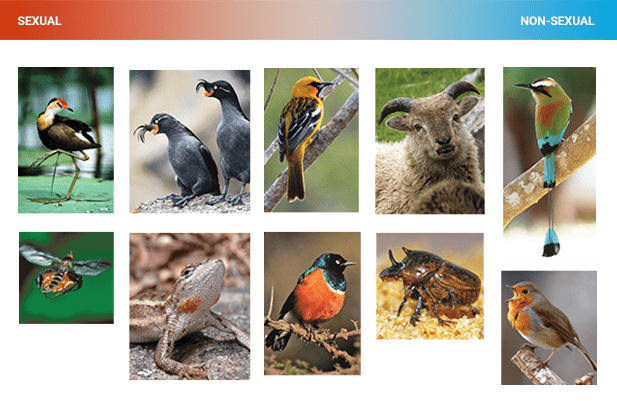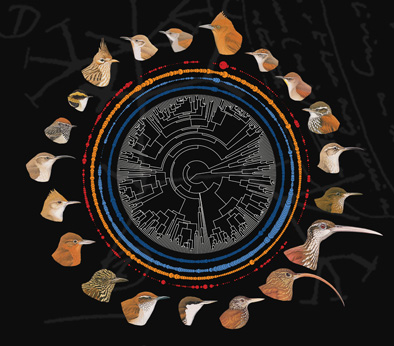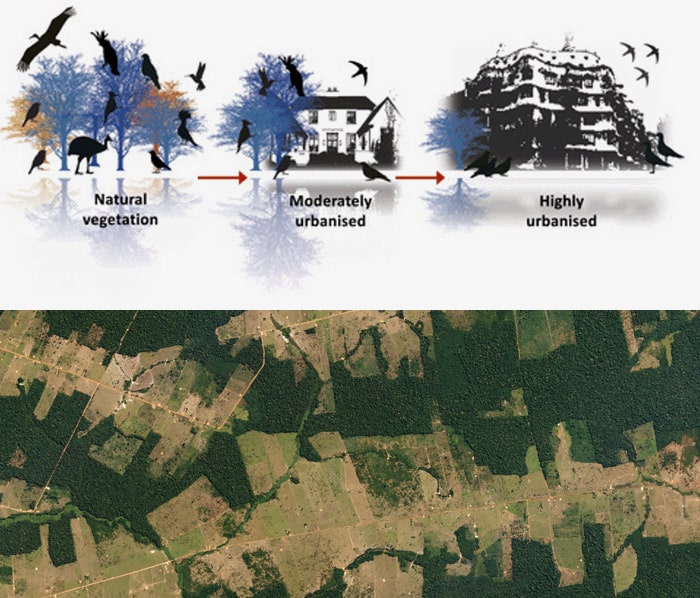Research
Fasten your seatbelts. We have now entered the Anthropocene, a period of global transformation and uncertainty. A combination of rapid land-use and climate change, coupled with mismanagement of natural resources worldwide, poses serious risks to ecosystems and ultimately to human health and wellbeing. To help address this challenge, we ask how biodiversity evolves, functions and responds to environmental change. Our goal is to explore how natural systems work and to improve their resilience through sustainable development, conservation and restoration of ecological processes. This requires an integrative approach to study how biological systems operate across scales from individual fitness and behaviour to multispecies interaction networks.
A general review: Tobias, J.A. et al. (2020) Avian diversity: speciation, macroevolution and ecological function. Annual Reviews of Ecology, Evolution and Systematics 51: 533–60. Read paper
Populations
We study how animals evolve and diversify. With a focus on birds, we are interested in understanding patterns and processes at the population level, including signal evolution, speciation and sensitivity to environmental change. We use a range of phylogenetic and trait-based models to test ideas about the causes and consequences of phenotypic evolution, taking into account factors such as latitude, climate, behaviour and dispersal.
Example: Tobias, J.A. et al. (2012) The evolution of female ornaments and weaponry: sexual selection, social selection and ecological competition. Phil. Trans. Roy. Soc. B 367: 2274–2293. Read paper
Example: Sheard, C. et al. (2020) Ecological drivers of global gradients in avian dispersal inferred from wing morphology. Nature Communications 11: 2463. Read paper
Interactions
Species interact in numerous ways, many of them fundamental to the processes driving phenotypic evolution, structuring ecological communities and regulating ecosystem function. To explore these processes, we use broad-scale comparative analyses and macroecological modelling, as well as observational and experimental field studies of interacting species at single sites or transects, with a focus on trait-based and molecular approaches. The goal is to understand how complex biological systems are shaped by ecological processes, including interspecific competition and the trophic interaction networks underpinning pest control, seed dispersal and pollination.
Example: Tobias, J.A. et al. (2014) Species coexistence and the dynamics of phenotypic evolution in adaptive radiation. Nature 506: 359–363. Read paper
Example: Grether, G.F. et al. (2017) Causes and consequences of behavioral interference between species. Trends Ecol. Evol. 32: 760–772. Read paper
Example: Leimberger, K.G. et al. (2022) Evolution, ecology, and conservation of hummingbirds and their interactions with flowering plants. Biological Reviews 97: 923–959. Read paper
Ecosystems
The Earth’s landscapes are facing rapid fragmentation and degradation through land-use and climate change. Species are being lost to extinction and vital ecological processes are being impaired. We apply insights from our research to address current global challenges, including biodiversity conservation and the establishment of resilient socio-ecological systems balancing the needs of people and nature. A core theme of our research is understanding the role of biodiversity in supporting sustainable forestry and food production systems. This includes meta-barcoding to identify management interventions that promote natural pest control, and developing biodiversity indices for use in research, governance, and commercial applications.
Example: Edwards et al. (2014) Maintaining ecosystem function and services in logged tropical forests. Trends Ecol. Evol. 29: 511–520. Read paper
Example: Waldron, A. et al. (2017) Reductions in global biodiversity loss predicted from conservation spending. Nature 551: 364–367. Read paper
Example: Sol et al. (2020) The global impact of urbanisation on avian functional diversity. Ecology Letters 23: 962–972. Read paper


